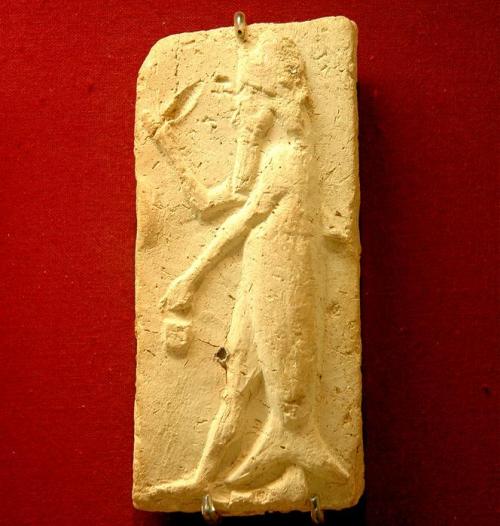On the Mythic Reigns of Antediluvian Kings in Sumeria
“Of the many fascinating and instructive artifacts that have been recovered from sites in Iraq where flourishing Sumerian cities once stood, few have been more intriguing than a prism now in the Weld-Blundell collection of the Ashmolean Museum in Oxford, England. Known more popularly as the Sumerian King List, it is held to have been compiled from as many as fifteen different texts.

Among all the extant exemplars of the Sumerian King List, the Weld-Blundell prism in the Ashmolean Museum cuneiform collection represents the most extensive version as well as the most complete copy of the King List. It lists rulers from the antediluvian dynasties to Suen-magir, the fourteenth ruler of the Isin dynasty (ca. 1763–1753 B.C.). The prism contains four sides with two columns on each side. Perforated, the prism must originally have a wooden spindle going through its centre so that it might be rotated and read on all four sides.
http://cdli.ox.ac.uk/wiki/doku.php?id=the_sumerian_king_list_sklid=the_sumerian_king_list_skl
The King List traces the rulers of certain Sumerian cities in succession and is of immense value because it contains some very old traditions while at the same time furnishing an important chronological framework for the antediluvian period of the Near East. The original form of the List is thought to have gone back to Utu-Hegal, king of Uruk, perhaps about 2000 BC, but who was certainly flourishing during the early stages of the celebrated Third Dynasty of Ur (c. 2070-1960 BC).
The List commenced with an “antediluvian preamble”: “When kingship was lowered from heaven, it was in the city of Eridu.” After two kings had ruled over Eridu, kingship was transferred to Badtibira (usually identified with Tell Medain near Telloh), where the reigns of three kings were duly recorded in succession.
The antediluvian portion of the King List concluded with three rulers who reigned in Larak (possibly Tell el-Wilaya near Kut el-Imara), Sippar (the modern Abu Habba, twenty miles southwest of Baghdad), and Shuruppak (identified with Tell Fara, some forty miles southeast of Diwaniyah) respectively.
At this point the narrative broke off with the terse words: “the flood swept over (the earth).”
Thereafter the prism continued with the postdiluvian dynasties of Kish and other cities, but this material comes from a much later period and translations are not entirely reliable in some areas. Because this section is not significant for the present discussion, it will be dispensed with.

Among all the extant exemplars of the Sumerian King List, the Weld-Blundell prism in the Ashmolean Museum cuneiform collection represents the most extensive version as well as the most complete copy of the King List.
In this depiction, all four sides of the Sumerian King List prism are portrayed.
http://cdli.ox.ac.uk/wiki/doku.php?id=the_sumerian_king_list_sklid=the_sumerian_king_list_skl
It should also be noted that, some 2,000 years later, a Babylonian priest named Berossos furnished what has been regarded as a revised form of the Sumerian King List but reproduced the names in Greek rather than Sumerian.
Berossos compiled the material in the time of Antiochus I (281-261 BC) and cataloged ten rather than the eight rulers on the original list. The identities of the kings on the revised list are difficult to confirm for the most part, but as with the ancient record the one Berossos compiled ascribed very long reigns to each ruler.
While the antediluvian section of the Sumerian King List has usually been regarded as important for establishing a chronology of early Sumerian kings, their amazingly long tenure of regal office has provoked many attempts at interpretation. At one extreme was the desire to dismiss the astronomically large figures as “completely artificial” on the grounds that such a position could hardly be denied even by the most superficial examination.
Some other investigators, influenced by the mythological interpretation of Biblical and other ancient Near Eastern writings, relegated the numbers frankly to legend and folklore and regarded them as unworthy of serious consideration.
Other scholars, however, feeling that they had some sort of basis in reality, thought of them in terms of epic or monumental description. There were in fact some grounds for this position, especially when it was learned that in ancient Egypt the phrase “he died aged 110” was actually an epitaph commemorating a life that had been lived selflessly and had resulted in outstanding social and moral benefits for others (cf. Genesis 50:26; Joshua 24:29).
It was thus a poetic tribute and bore no necessary relation to the individual’s actual lifespan.”
R.K. Harrison, “Reinvestigating the Antediluvian Sumerian King List,” Journal of the Evangelical Theological Society (JETS) 36 / 1 (March 1993), pp. 3-4.


